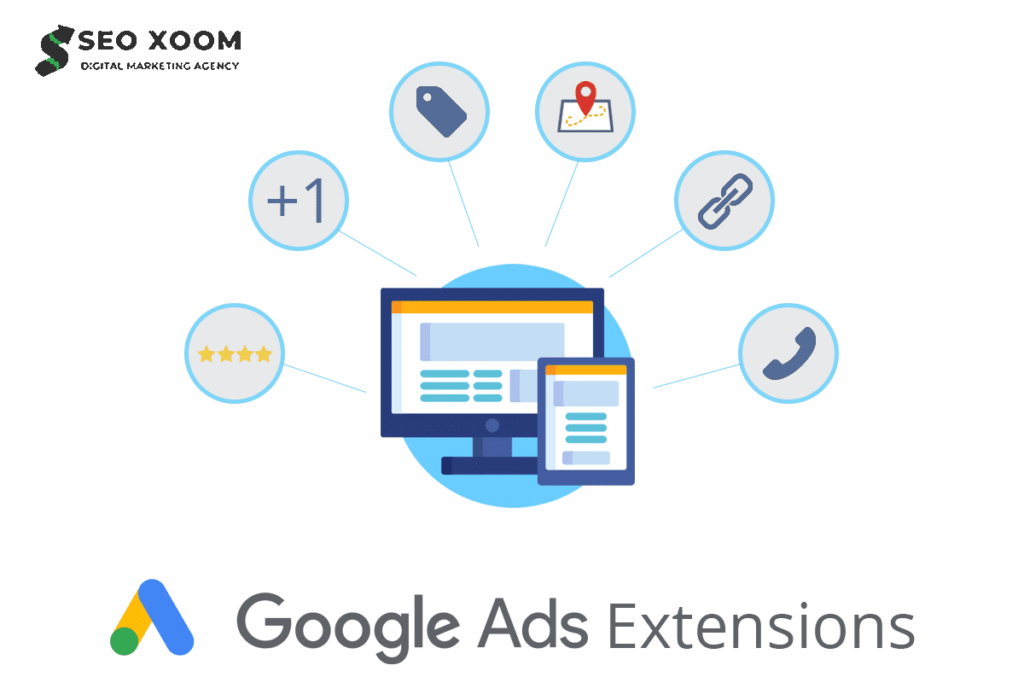If you’re running online ads for your business, you know how important it is to get the most out of your ad spend. One way to do this is by using ad extensions, which are additional pieces of information that appear alongside your ad. Ad extensions can improve your ad’s performance by making it more relevant and informative to potential customers. In this article, we’ll explore the different types of ad extensions and how to use them to enhance your ads’ performance.
Sitelink Extensions
Sitelink extensions are additional links that appear below your ad and can direct customers to specific pages on your website. They can help improve click-through rates and provide users with a more relevant experience. To set up sitelink extensions, you’ll need to go to the “Ads & extensions” tab in your Google Ads account and click on “Sitelink extensions.” From there, you can create new sitelinks or edit existing ones. When creating sitelinks, be sure to use descriptive, actionable text and link to relevant pages on your website.
Best practices for using sitelink extensions include using at least four sitelinks, using different link text for each sitelink, and testing different combinations of sitelinks to see which perform best.
- Call Extensions
Call extensions allow potential customers to call your business directly from your ad. They can help increase phone calls and make it easier for customers to get in touch with you. To set up call extensions, you’ll need to go to the “Ads & extensions” tab and click on “Call extensions.” From there, you can choose the phone number you want to use and customize when the call button appears on your ad.
Best practices for using call extensions include using a local phone number, using call tracking to measure performance, and scheduling call extensions to only appear during business hours.
- Location Extensions
Location extensions show potential customers your business’s address, phone number, and a map marker. They can help increase foot traffic to your physical location and make it easier for customers to find you. To set up location extensions, you’ll need to go to the “Ads & extensions” tab and click on “Location extensions.” From there, you can link your Google My Business account to your Google Ads account and choose which locations to show in your ads.
Best practices for using location extensions include verifying your business’s location in my Google My Business account, using accurate and up-to-date location information, and using location bid adjustments to prioritize ads for locations with higher potential.
- Promotion Extensions
Promotion extensions allow you to highlight special offers and promotions in your ads. They can help increase click-through rates and encourage customers to make a purchase. To set up promotion extensions, you’ll need to go to the “Ads & extensions” tab and click on “Promotion extensions.” From there, you can choose the promotion you want to feature, such as a percentage off or free shipping, and customize the text that appears in your ad.
Best practices for using promotion extensions include using promotions that are relevant to your target audience, testing different types of promotions to see what performs best, and scheduling promotions to align with your marketing calendar.
- Price Extensions
Price extensions allow you to showcase your products or services and their prices in your ads. They can help increase click-through rates and provide customers with more information before they click on your ad. To set up price extensions, you’ll need to go to the “Ads & extensions” tab and click on “Price extensions.” From there, you can create a new price extension and enter your products or services, their prices, and a description.
Best practices for using price extensions include using descriptive and specific product names, using competitive and accurate pricing, and testing different price extensions to see what performs best.
- Structured Snippet
Extensions Structured snippet extensions allow you to highlight specific aspects of your products or services, such as types or brands. They can help provide additional information to potential customers and improve ad relevance. To set up structured snippet extensions, you’ll need to go to the “Ads & extensions” tab and click on “Structured snippet extensions.” From there, you can choose a header and list items that describe your products or services.
Best practices for using structured snippet extensions include using relevant and specific headers and list items, using multiple structured snippets to showcase different aspects of your business, and testing different combinations to see what performs best.
Conclusion
Using ad extensions can be a powerful tool to enhance the performance of your online ads. By providing additional information and making your ads more relevant, you can improve click-through rates, drive more traffic to your website, and increase conversions. Whether you’re using sitelink extensions, call extensions, location extensions, promotion extensions, price extensions, or structured snippet extensions, be sure to follow best practices and test different strategies to see what works best for your business.
FAQs
A: Ad extensions are additional pieces of information that appear alongside your online ads to provide more information to potential customers.
A: You can use multiple ad extensions in your ads, but be sure to follow best practices and not overwhelm your ad with too many extensions.
A: No, ad extensions are free to use and can be a valuable tool to improve your ad performance.
A: Ad extensions can be used in most ad formats, including search, display, and video ads.
A: You can measure the performance of your ad extensions by using Google Ads reporting and monitoring metrics such as click-through rates, conversion rates, and call volume.




